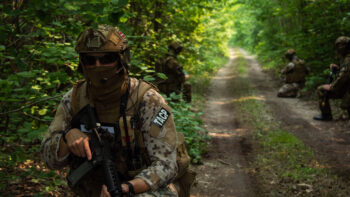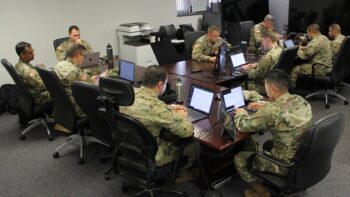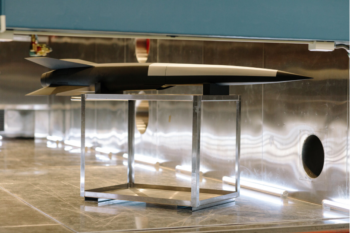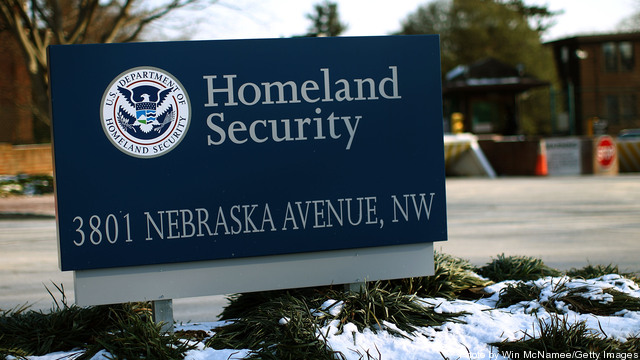
This article marks the beginning of our examination of just what America’s national security leaders should do next to secure our national security, 10 years after the terror attacks of Sept. 11, 2001. We will post at least one analytic piece each day until the anniversary.
One of the lasting legacies of 9/11 that continues to affect the daily life of every American is the Department of Homeland Security. It sounds like something out of a bad dystopian novel, and it is: given its sheer size — over 225,000 employees — massive expense (estimated at $55 billion in 2010), and vast political reach, its very existence has fueled endless X-Files conspiracy theories. It is the perfect foil for every argument that all the U.S. government needed to cement its control over the population is a major attack that would scare Americans so witless they would sign their lives over to the gray men of the national security bureaucracy.
If only the government were that efficient or far-sighted. Alas, the truth is more mundane: the reality is that DHS is a colossal and inefficient boondoggle, an institutional over-reaction similar to Jimmy Carter’s panicky creation of the Department of Energy in response to an energy crisis that came and went in the 1970s. Enough time has passed that other ill-advised policies that were adopted in the heat of the post-9/11 moment have been discarded or scaled down: the Patriot Act, for example, was renewed only in parts (although still too many), rather than in toto, by the Obama administration. It is time to reconsider the role and expense of Homeland Security — or whether it should even exist.
DHS was a panic reaction, a precipitous act by a Bush administration determined to show it was “doing something” about terrorism. The horses had already escaped, but the Bush administration went ahead anyway and bought more land, constructed extra barns, equipped them with state-of-the-art doors, and then hired thousands of conscientious civil servants to slam them shut over and over again, for the rest of eternity. The first Secretary of the new department, former Pennsylvania governor Tom Ridge, was unquestionably a formidable man and a proven American leader, and he was promptly installed with great fanfare atop a blob of institutional spaghetti that no one, to this day, can make any sense of. (Quick: name Ridge’s successors.)
Like all mediocre ideas, the creation of DHS involved a movement of organizational boxes and the creation of layers of administration that would shame a Soviet central planner. The glass boxes that surround the Washington Beltway once again hum with vibrant activity. Like the last wave of young, dedicated, eager, and inexperienced Cold Warriors brought to Washington by Ronald Reagan’s investments in defense a generation earlier, young men and women assemble in the wee hours of the morning — their importance proclaimed by the security badges they carefully display by wearing them around their necks in public — to join the inevitable brigades of contractors and revolving door executive-branch retirees clogging the Virginia and Maryland interstates as they head to work for a long day of creating pretty slides that they then brief to each other at top dollar.
Out in the land, meanwhile, armies of newly-minted security guards at airports check the shampoo bottles of shoeless matrons and belt-less executives. The Coast Guard has been shuttled from the Department of Transportation to DHS to remain an armed service outside the armed services. While one might assume the states are now amply funded to prepare should terrorists decide, after tiring of New York and Washington, to strike at America’s amber waves of grain, complaints from the heartland that too much federal anti-terrorism funding go to those and other “high risk” cities abound. Everyone wants their place at the feeding trough. The amount of money unleashed by anything with the name “security” in it has been stupendous. The most obvious result of all this bureaucracy is a whopping tab for a department that, when taken with the Defense Department and other agencies, is now part of a national security establishment so large that no one, as William Arkin and Dana Priest of The Washington Post recently wrote, can even keep track of it anymore or tally its actual costs.
None of this is to impugn either the motives or the dedication of our colleagues at DHS; we ourselves are Federal employees — although note, we speak for no one but ourselves — and we know that government workers, contrary to the sniping stereotypes, do in fact work hard and believe in their service to the United States and the American people. But fundamentally the question must be asked: Has any of this orgy of money, bureaucracy, and PowerPointing improved U.S. national security? The war on terror is a classic case of an “away game,” in which the most important guarantee of the security of the American public is to stop plots, and the plotters, at the source.
This is especially the case since the threat comes in small packages, literally, as individuals and small groups plot overseas. No amount of money or bureaucracy, for example, stopped a Nigerian from getting on a U.S. airliner wearing explosive underwear in 2009. Resources would be better spent intercepting him in Yemen, along with the people who trained him, not trying to stop him moments from the aircraft. Massive bureaucracies are not suited to stealthy threats, any more than elephants are suited to stomping out mosquitoes. More to the point, there is only so much “security” that can be achieved in a free society. We cannot screen every person who walks into an airport, mall, school, or theater. (Just ask the Russians. They’ve tried.)
Bolting layers of bureaucrats onto existing organizations does not make those organizations more efficient, it just makes them more expensive and intrusive. So where should we redirect our resources now that al-Qaeda is in tatters and billions have been sunk into dubious “security” institutions? First, the priority should be on intelligence, domestic and foreign. We already know how to do this, and our civilian and military intelligence services should lack for nothing, including human resources, in carrying out their missions.
The U.S. military has the finest operators in the world in it, and elite professionals like Seal Team Six are more than capable of pulling up the terrorists by the roots if they are pointed in the right direction. One more tired airport screener or one more glossy briefing will not have the impact of seizing the computers of dead jihadists. Second, we need a longer term strategy for dealing with terrorism overall. Perhaps the most disappointing non-event of the past ten years has been the complete failure of America’s intellectual infrastructure, including its colleges and universities, to create a reserve of expertise similar to that funded by the U.S. government in the wake of the Soviet challenge in the 1950s. There’s enough blame to go around here: civilian academics are loath to work with the government and (often rightly) suspect either that their research will be tainted or that such an association will hurt their careers.
The government, for its part, has tried as former Defense Secretary Robert Gates (echoing Arthur Schlesinger decades ago) admonished, to “embrace the eggheads” though many of the programs set up toward that end have already come and gone. As we have said before, academics and defense intellectuals can do better working with each other, and must. Even a fraction of the DHS’s riches, if properly administered, could create a far more secure foundation for fighting Islamic extremism than we have now. A quick check of this week’s website top stories at the DHS website reveals a wealth of information about… Hurricane Irene. Is this why DHS was created? To cope with bad weather and floods, no matter how deadly? Is this why a 500-page bill was passed while the remains of the World Trade Center smoldered at Ground Zero? Don’t we already have a National Weather Service and a National Guard? Come to think of it, perhaps the weather service should be put under Homeland Security. Everything else is.
Joan Johnson-Freese, a member of the Breaking Defense Board of Contributors, is a professor at the Naval War College, lecturer at Harvard and an expert on U.S. military space, Chinese space and the PLA. Her co-author is Tom Nichols, a professor of national security affairs at the U.S. Naval War College and an adjunct professor at the Harvard Extension School. He served as personal staff for foreign and defense affairs to the late Sen. John Heinz of Pennsylvania. His most recent book is Eve of Destruction: The Coming Age of Preventive War.
No service can fight on its own: JADC2 demands move from self-sufficiency to interdependency
Making all-domain operations a warfighting capability means integrating, fusing, and disseminating a sensor picture appropriate for a particular theater segment, not all of them, says the Mitchell Institute’s David Deptula.



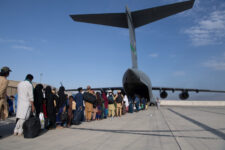





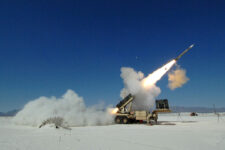
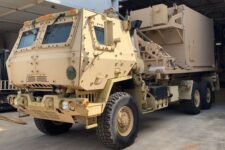
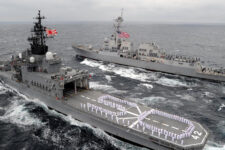


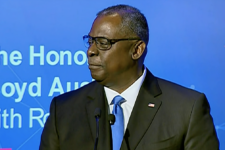

![E-2D_AR_1[1]](https://breakingdefense.com/wp-content/uploads/sites/3/2024/10/E-2D_AR_11-350x233.png)
